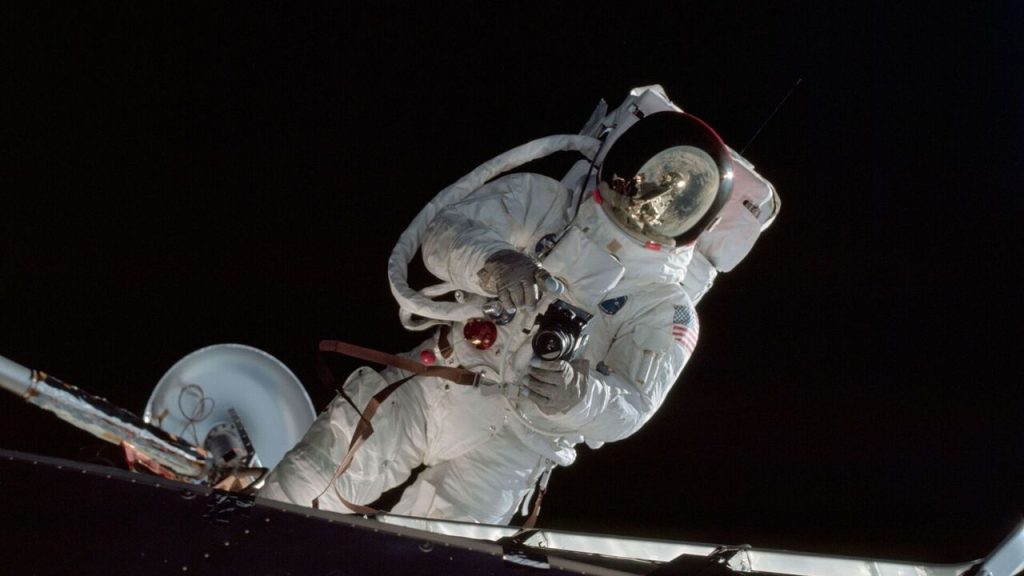No More Watermarks
Richard Misek on A History of the World According to Getty Images
Filmmaker Richard Misek takes on the world’s largest commercial image archive, probing the legal, economic, and ethical implications of granting a private corporation such power over our shared cultural memory.

A History of the World According to Getty Images opens with a captivating montage of clips spanning the history of the moving image—from the earliest test flights of the Wright brothers to the Umbrella Revolution in Hong Kong—all branded with Getty’s ubiquitous translucent watermark. From there, Misek explores how such images (even those in the public domain, and therefore free from copyright) can be controlled and ransomed by organisations like Getty, as long as there exists no other practical way to gain access to them.
Though it’s a rich viewing experience in its own right, A History of the World According to Getty Images persistently redirects our attention to those films that came before it and those yet to come. As he presents each new piece of archival footage, Misek asks us to consider the context of its creation and what its containment within Getty’s vast archive might mean for the filmmakers of tomorrow, whose access to our shared visual heritage will remain constrained.
In an effort to right this wrong, albeit only partially, Misek stages a radical intervention: having licensed a handful of public domain (but publicly unavailable) clips from Getty, he releases them into the wild, unburdened of their watermarks at last.
It’s refreshing to see a film that is so thoughtful in its use of archival footage. What do you make of how archive is typically used in contemporary cinema?
Over the last decade and a half, there has been a strong tendency to treat archival footage as neutral content that can be repurposed and reused in any way, for any reason. On the one hand, this has allowed found footage filmmaking to make huge creative advances by enabling creators to use archival footage subversively, oppositionally, or just indifferently to its original context. But I also wonder whether, in between the legal rights of copyright owners and the rights of artists to reuse footage creatively, there might be something else: whether images themselves might need some kind of rights—for example, the right to have their source properly acknowledged and considered.
Do archives like Getty pay any attention to these questions? Is there a moral framework to their business model, or is it purely commercial?
With commercial archives, I don’t see evidence of any kind of ethics in play. Archive clips for them are just assets from which economic value can be extracted. That’s actually what Getty calls them on its website: assets. I’ve tried to find information on how Getty maintains its physical archive; how it preserves and restores and migrates stuff to new digital formats, but I haven’t found anything. I suspect they just do what they must to maintain their stock of sellable content: popular footage probably gets upconverted, obscure footage probably slowly rots somewhere in a large warehouse. Commercial archives answer only to their shareholders, so where would be the motivation to do it any other way? It would be irrational for them to follow the same archival duty of care as a national film archive.
Your film opens with a montage that delivers on its title: a history of the world—or at least the 20th Century—told entirely through footage held by Getty Images. Was this the first sequence you put together?
It was the first sequence I imagined. The film began as a knee-jerk reaction to seeing how much content was online but only available if you were willing to live with the fact that it had a Getty Images watermark on it. I thought if I can’t have these images without the watermark, I’ll take them with the watermark and make a film instead and draw attention to how Getty positions itself between the image and the viewer, and between the creator and the consumer.
Despite the distancing effect of the watermark, they’re nonetheless very powerful images.
Absolutely. Getty’s collection is subject to countless historical biases. Almost all of its images from before the 2000s were, one way or another, made by proxies of powerful governments or corporations, largely belonging to the Global North. And most of those, in one way or another, are assertions of colonial or corporate power. But at the same time, many weird and wonderful images don’t play by these rules and are very attractive to me as a filmmaker. Making the montage was a balancing act of trying to show clips that people would expect to be there, like Tank Man or the 9/11 attacks; clips that reflect the hegemonic world-view of 20th-century media; and clips in which the diversity of life occasionally breaks through 20th-century ideology, like the images of a team of female deep sea divers on a test dive in the 1930s.
I was also, of course, alert to the different ways in which images would have been seen then and how we would interpret them now. For example, the clips of civil rights protesters being beaten by police were made fifty years ago by a mainstream news station that wasn’t necessarily alert to the injustice taking place in front of the lens, but now they are a powerful testament to that injustice. That power is somewhat contained when the clips are low quality, mute, and branded with a corporate logo. Restoring some of the power inherent in the clips through cutting rhythm and surround sound was another goal of the montage.
It’s a very evocative montage, even if part of what it evokes resembles montages I’ve seen in other films.
I was quite surprised after my first cut at how powerful a thing I’d made. I’m a little embarrassed to admit it, but—unlike anything else I’ve ever made—I still regularly re-watch those four minutes. And whenever I do, I find myself again manipulated by my own artifice and taking pleasure in succumbing to it.
There’s a significant shift in tone after the montage as the film becomes more analytical.
The opening montage is all about the surface: the low quality of the preview files and the same proprietorial watermark, always in exactly the same position. Then, the rest of the film is about looking behind the surface, which can happen along many trajectories—for example, through close analysis of an image, recounting an image’s provenance, or discussion of its political context. That also reflects how the film was made. Having had the idea for the initial montage, I realised it wouldn’t be enough in itself. I had to go deeper. When I had the chance to get a small amount of funding from a UK TV station—who, incidentally, almost killed the film, but that’s another story—I got the idea of licensing some public domain clips and then releasing them from Getty’s captivity.
This simple idea, in turn, started me on a train of thought that will probably keep me busy for years to come. I’m already planning both a feature film and a book on some of the fundamental issues I’ve faced through making this little film.
Now that you have liberated those images, have you heard from anyone who’s used them or otherwise benefitted from what you’ve done?
No, apart from a film festival that uploaded my film without permission and got 50,000 views before I’d even put it online myself and without me knowing anything about it! But that’s what you get when you make something public domain.
Otherwise, no. I always realised that releasing six clips could only ever be a symbolic gesture; what are the chances that somebody will need to use a clip of the Hindenburg disaster in a film they’re making? I’ve put all the clips onto the Internet Archive now so that they can be individually searched, and people don’t have to go through my film to get them, which feels like an important step. I do dream, though, of one day organising a mass breakout—of doing something similar to what Aaron Swartz did… Except legally, and not ending up dead at the end of it.
This text was published in cooperation with This Is Short, the European streaming platform for short films.

